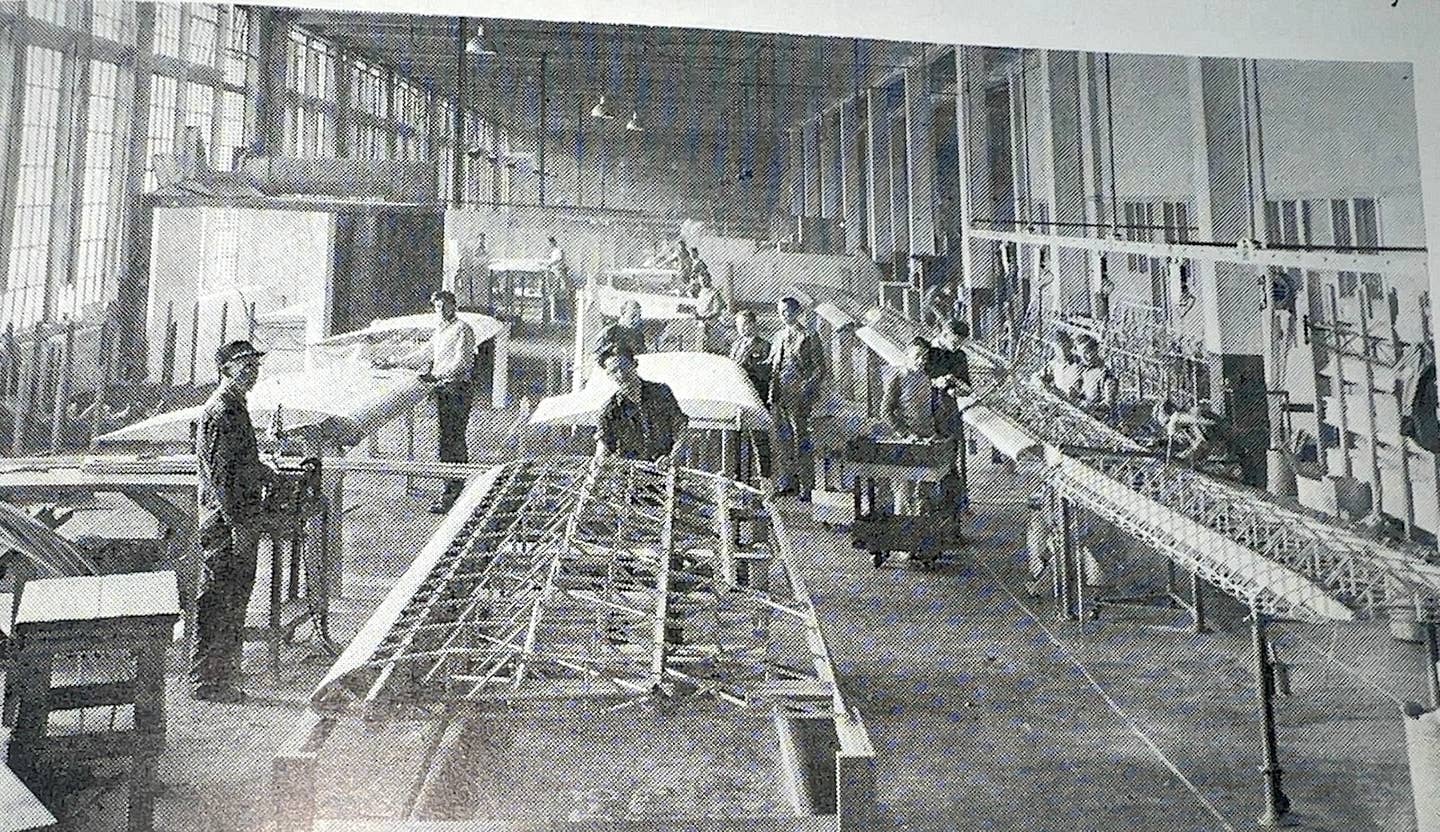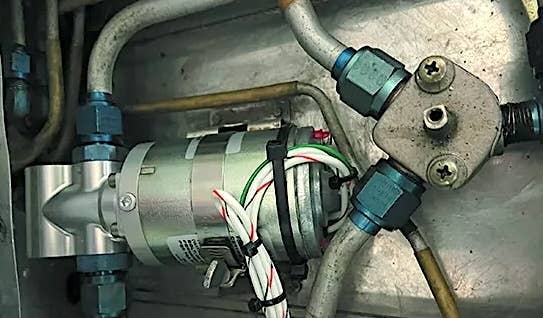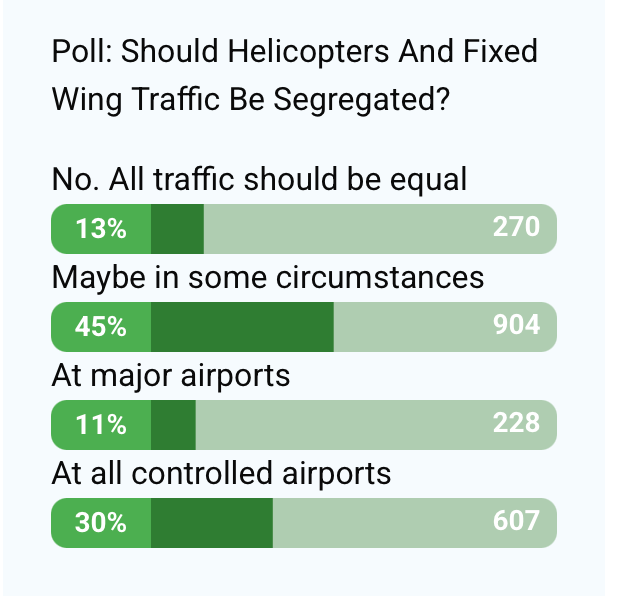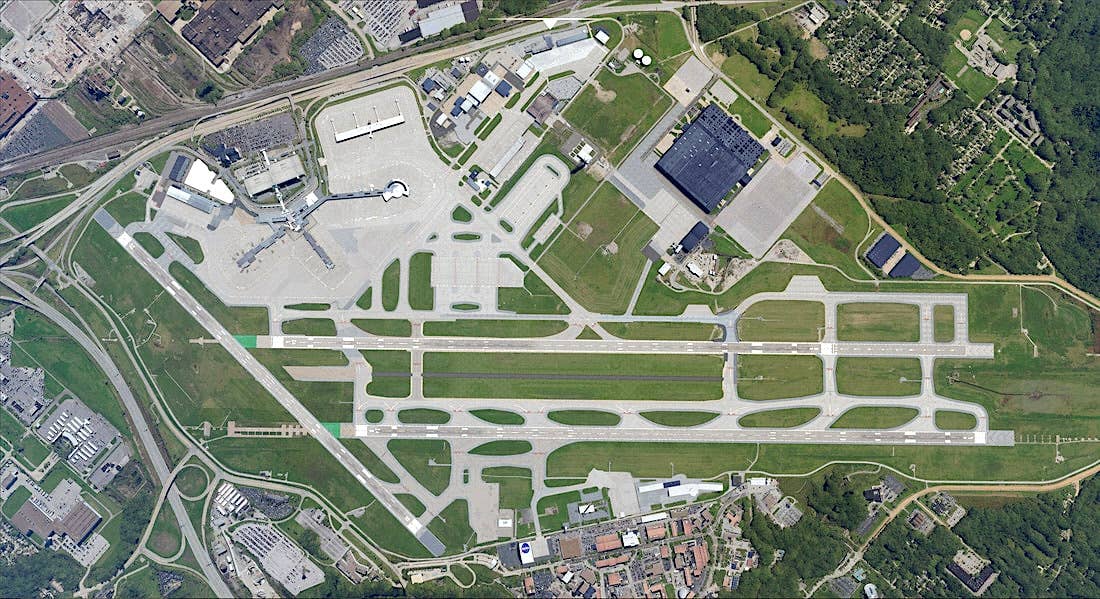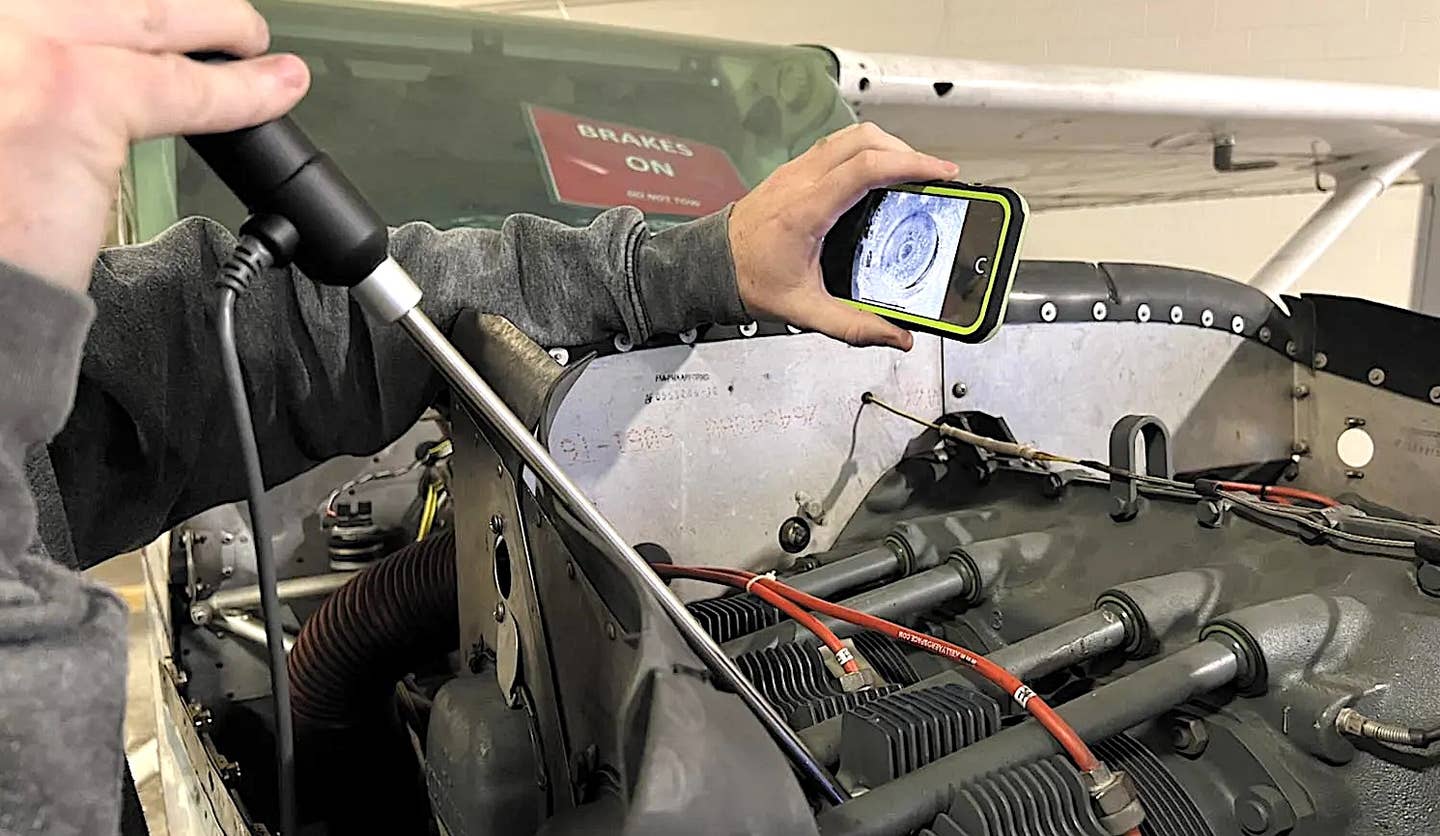Hazel Sig
Did your interest in flying start with building model airplanes? Hazel Sig and her late husband Glen started Sig Manufacturing Company in 1951, and over 48 years shipped truckloads full of balsa and R/C parts all over the world. In March she turned 80 and still flies her signature blue-and-white clipped-wing Cub and the Spacewalker which she co-built. In this month’s Profile AVweb‘s Joe Godfrey talks with Hazel about flying aerobatics, teaching in taildraggers, and R/C models.
 Hazel Sig-Hester was born March 3,1922, in Grinnell, Iowa. Her family lived on 3rd Street, Hazel was the thirdchild, and Grinnell was the third town her parents had lived in, so it's easy tosee what her lucky number is. Hazel's father took a ride with Charles Lindberghwhen he passed through Iowa giving rides, and her father took Hazel for herfirst airplane ride when she was -- you guessed it -- three months old. Hazel'sfather was an auto mechanic who loved to race, and was killed racing when Hazelwas 17. After Hazel graduated from high school she worked as a dental assistant.As she puts it, "Glen Sigafoose came roaring into town on his Indianmotorcycle in 1942" and they began dating. Glen was a Linotype operator forthe Montezuma [Iowa] Republican and Hazel learned the trade by watchingGlen. They married in 1943 and planned to buy the Republican someday.Eventually Glen -- whose nickname was Poncho -- became the paper's shop foremanand Hazel became the fastest Linotype operator in the state.
Hazel Sig-Hester was born March 3,1922, in Grinnell, Iowa. Her family lived on 3rd Street, Hazel was the thirdchild, and Grinnell was the third town her parents had lived in, so it's easy tosee what her lucky number is. Hazel's father took a ride with Charles Lindberghwhen he passed through Iowa giving rides, and her father took Hazel for herfirst airplane ride when she was -- you guessed it -- three months old. Hazel'sfather was an auto mechanic who loved to race, and was killed racing when Hazelwas 17. After Hazel graduated from high school she worked as a dental assistant.As she puts it, "Glen Sigafoose came roaring into town on his Indianmotorcycle in 1942" and they began dating. Glen was a Linotype operator forthe Montezuma [Iowa] Republican and Hazel learned the trade by watchingGlen. They married in 1943 and planned to buy the Republican someday.Eventually Glen -- whose nickname was Poncho -- became the paper's shop foremanand Hazel became the fastest Linotype operator in the state.
While they waited for the paper's owner to sell, Glen and Hazel opened anIndian motorcycle dealership. Glen designed a set of custom aluminum wheel discsfor Indians and a mold to spin them. They sold a lot of them until the Koreanconflict cut their aluminum supply entirely. Hazel and Glen both built modelairplanes and in 1951 started selling balsa to other model makers. Their littlemom-and-pop business grew to become SigManufacturing Company, selling remote-controlled kits and supplies to modelbuilders around the world. Hazel learned to fly in 1958, and flew aerobaticshows with Glen and their friend and fellow model builder Maxey Hester. Glen waskilled during a performance in Centerville, Iowa, in 1980. Hazel stopped flyingair shows but continued to fly, and continued to operate the R/C business withMaxey. She married Maxey in 1981 and they sold the business in 1998. At 80 yearsyoung she still flies her clipped-wing Cub and the single-place, tail-draggerSpacewalker which she and Maxey built. And her Corvette will go at least 140miles an hour when she can find the right road to let it go.
I don't suppose you remember your first flight?
No I don't, since I was only three months old. We moved to Montezuma when I was six, and I do remember the mail planes passing through. There was one beacon east of town and another west of town, and whenever one of the planes had something wrong with the engine my father would work on it, and sometimes the pilots would take us for a ride.
The first house we lived in in Montezuma was across the street from a vacant lot. We played on that lot when we were kids, and in 1951 Glen and I built our building on that lot.
I was about 17 when I got my first chance to fly an airplane. It was the beginning of the war and three guys in my high school class were going to take flying lessons, and I tagged along. I got about half an hour of instruction. When I was about 30 or so a friend of mine -- who had flown P-51s during the war -- became a flight instructor in Sigourney, Iowa, and Poncho and I rode our Indian Motorcycles down there for flying lessons. The first time up he taught me to fly by talking me around, and when I landed he said "You'll never make a better landing." We started on the Fourth of July and I had my private in October.
Which airplane was that?
 | |
We bought a Champ and that's what we learned in. About a year later we bought a Cessna 140, and after I got my instructor's rating I instructed in it. I had a problem on takeoff when I was learning to fly because my instructor never made it clear what happened to the tail on takeoff. When I was instructing in the 140, I taught students that after an aileron or a rudder input, they couldn't just leave it there, they had to neutralize again.
I noticed that students who learned in Cessna 150s soloed faster then my students in the 140, so I sold my 140 and taught in the 150. They may have soloed faster, but I think the pilots who could fly the 140 were more skillful pilots.
What attracted you to teaching?
We enjoyed flying ourselves, and Poncho said there weren't going to be any more pilots in the area until one of us got an instructor's rating, and I was elected. I got my commercial rating -- and at that time you weren't required to have an instrument rating to teach -- but I did have some hood time. I instructed a group here in Montezuma, and did some instructing in Ottumwa and Fairfield, Iowa. I taught a lot of college kids.
I taught my students to hedgehop. We were careful and we knew the land, so it wasn't a daredevil attitude, but I wanted them to be able to fly low confidently in case they ever got caught in weather. One time Maxey was out flying low with his brother, and his brother said "At least when you're down here you don't have much traffic to worry about," and Maxey said "You just have to worry about Hazel coming up underneath you."
Recently -- in the last few years -- a tall, good-looking guy came to one of our model contests and said he was an airline pilot flying international routes and that I had taught him to fly. It was quite a thrill.
When did you start flying aerobatics?
Back then -- in the late 50s -- there weren't a lot of aerobatic instructors around. I flew out to western Nebraska to take some lessons. We flew three hours in the morning, broke for lunch, and three more hours in the afternoon. He said he'd never seen anybody who could take that much aerobatics in one day. He taught in a clipped-wing Cub, and when I got back home that's what I wanted. I found a regular Cub -- the blue-and-white one that we still have -- and converted it to a clipped-wing Cub.
I bought Duane Cole's book and taught myself aerobatics. I read it before I went up and took it with me and read it while I was flying. I couldn't do any inverted flight because I didn't have the fuel system -- and it's a good thing because I found out later Cubs only fly for a few seconds after they're inverted.
Maxey found a single-hole Pitts Special for sale in Council Bluffs and I sold my Cessna 150 and we got the Pitts. Maxey and I learned to fly the two-hole Pitts -- and once you've flown the single-hole the two-hole is really easy -- and I won the toss on flying it back to Montezuma. They had told me to stay off pavement for a while and I was kind of sweating the landing, but it was fine. It was just another taildragger. We started using a slip maneuver for landing so we could see the runway, because the visibility is so bad in the single-hole Pitts.
I had a Smith Miniplane for a while. It had an interesting problem with the brakes. The heel brakes were too far from the rudder pedals, and you couldn't use them both at the same time. A couple of those landings were a wild ride, until we moved the brakes closer to the rudder pedals.
They tell me that after Pitts flew a Smith Miniplane he designed the double-aileron Pitts. It was quick -- the first time I did a snap roll in the Smith I got a snap and a half.
Let's go back to Cubs for a minute. Are all clipped-wing Cubs the same?
 | |
| Hazel Sig and her signature blue-and-white clipped-wing Cub(s). |
No. Ours was a Reed conversion. We began with a regular Cub and took out about 40 inches at the wing root. There's another conversion where they clip the outboard, and those are rarer. I flew it down to Ottumwa and took the wings off myself. When the mechanic uncovered the wing we discovered quite a bit of mouse damage -- a large section of the spar was chewed away -- on the main spar. It really was a wonder it didn't break when I was doing snap rolls. So we fixed that, and I brought the wings back to sew them in the basement of the plant. When I went to install the wings, I found that the mechanic had rigged the control cables backward, so I would've been been getting right aileron when I wanted left aileron. He was convinced he was right but I had taken it apart so I knew how it should go back together. I finally convinced them I was right before we recovered it.
Since you flew it to Ottumwa you had a chance to fly it before and afterthe clip. How did the clip change the performance?
I had done solo aerobatics before we clipped the wings, too. A regular Cub with big wings is pretty slow but it glides better. In a clipped-wing Cub, you had better turn a tight base, because it glided like a brick. All the maneuvers were cleaner in the clipped-wing Cub. Snap rolls were tighter.
I flew my clipped-wing Cub on at least two long trips. Once out to Doylestown, Pa., when the International Model Airplane Contest was held there. Poncho and Maxey flew my Cessna 150 and I trotted along behind them in the Cub. At one time on the way out the visibility got really hazy and I had to use the 150 for an artificial horizon.
The airplane was put in a big hangar out there and the model airplanes were impounded with it. Pictures of the Cub and the models were featured on a magazine from England, merely saying the the Cub belonged to Hazel Sig. There was a fellow pilot who looked in my cockpit, noting the lack of navigational instruments, turned to me and said "You trucked it out." Hah!
The weather turned really bad and we had to ride back in the company van. Poncho and I took a commercial flight back out later to fly both planes back. We got as far as Hershey, Pa., and the weather put us down overnight. The next morning was supposed to be bad so we didn't get up early, then we discovered the weather was good all the way home. We refueled the last time at Davenport, Iowa, on the Mississippi River and I took off as soon as I got my gas -- it was getting very late -- and I was flying along Interstate 80 and the sun was going down and I called Poncho on the radio, "Take off your sunglasses." There was a little silence, and then a soft "Oh."
I reached our field and landed into the wind, to the north, and Poncho came in and landed south, just as I turned off the runway. I was wearing a pair of yellow glasses that my doctor had loaned me and as I was taxiing in I pulled them off and discovered it was really dark! Made me a believer.
One other time I flew the Cub to Amarillo, Texas. Maxey was flying the Bonanza with me -- gear down, flaps down. Sometimes he would get tired and pour on the power after cleaning her up and fly circles around me for awhile.
My Dutch grandfather -- not to mention my German editor -- would probablykick me if I didn't ask you about that last name -- Sigafoose.
 | |
| Hazel and Maxey built this Spacewalker. It's almost as fast as her Corvette. |
As near as we can tell the Sigafoose name is German. The closest translation I've heard is "fleet of foot." When we started the business we realized no one would be able to spell it or pronounce it if they saw it spelled, so we shortened it to Sig. I was the first "Sig" because the belt I wore when I rode a motorcycle -- one of those fancy wide kidney ones -- had a design on the back out of studs that spelled "SIG." I have been known as Hazel Sig so many years that when Maxey and I were married I found out I could have any name I wanted so I kept the "Sig" part and added "-Hester." Had I known how much trouble the hyphen would cause with computers, I would have left off the "-Hester" part and just kept the "Hazel Sig." The computer at the hospital where we go cannot handle the hyphen and I come out "Sighester" -- and you can probably figure out how they pronounce that.
Did you and Glen and Maxey fly a three-airplane show?
Glen had smoke on his Pitts Special so he would lead and he would roll inverted with Maxey and me as wingmen, and we'd fly over the town that was having the air show to help attract a crowd. Other than that we flew separately.
What happened on the day he crashed?
We had friends visiting from New Jersey, so he flew them over in his Bonanza, dropped them off, and came back to get his Pitts. He flew to Centerville and arrived in town in the Pitts with his smoke on to advertise the show. Maxey had traded his Pitts for a Super Decathlon, and he was the first of us to fly that day. He called back down and said "Boy, this air is thin. We need to move everything up." It was hot so the density altitude was about 5,000 feet at a 1,000-foot [MSL] airport. We were also flying against the wind, which was pushing us back toward the crowd we weren't allowed to fly over. Maxey moved up, and when I flew I moved up, too. Glen was so proud -- that's the only word that describes it -- of his flying and didn't move higher and didn't change his routine. He had recently added a double snap roll on top of a loop, and he fell out of it and went into a spin. He did everything right -- kept the nose down and stopped the spin -- and was turning back towards the field, but he was still coming down fast. He was headed for a row of airplanes so he pulled back on the stick, did a high-speed snap, went over the top and spun into a cornfield.
He was alive when they got him out, but he died at the hospital. He had internal injuries, head injuries, both arms and both legs were broken. There was nothing they could do for him.
My friends wouldn't let me fly my airplane home, so someone gave me a ride home, and a friend flew my airplane home. My insurance company said they wouldn't cover me if I flew it, so that was that. I sold it.
I'll bet you had a tough time choosing between flying Cubs and ridingIndians?
We had a lot of fun with both of them. Poncho had a solo-saddle Indian but he had a small seat that sat up on the tank. When we rode together he sat in the tank seat and I sat in the back. Back then we had footboards, not pegs. There was a straight stretch of road just out of town, and I'd step off on the left footboard and he'd step off on the right one, and I'd swing over him and get up on the tank seat and he'd slide under me and get on the back seat. I'm sure we scared a lot of people rolling down the road doing that little trick.
It was a very solid riding motorcycle and you could do things like that. Poncho could stand on the seat and ride down the highway.
What are you flying now?
I'm still flying my clipped-wing Cub and my single-place taildragger Spacewalker which Maxey and I built. And my Corvette will go at least 140 miles an hour when I can find the right road to let it go.
When did you start building model airplanes?
 | |
| Backyard fun with Sig's 1/4 scale Cub |
I started building them when I was a little girl, and Poncho had been building rubber-powered and gas-powered models all his life. He came to town in 1942, and with the war on there weren't a lot of young people left in town. So he moved from Linotype operator to foreman, and I took over the Linotype, which I had learned just by watching him do it. We were still building models and we thought you ought to be able to buy balsa wood through the mail, so we started our business. We figured out some sizes and printed up a sheet which we offered for free in a tiny ad on one the model magazines. Then we figured out that if we charged 10 cents for the sheet we actually sold more lists than we gave away for free.
What's the biggest market for R/C airplanes?
We've always shipped all over the world. We probably shipped mostly to the eastern part of the U.S. and the Midwest -- New Jersey, New York, Pennsylvania, Ohio, Indiana and Illinois -- and have always shipped a lot to California , because the weather's better year-round. After Maxey started designing kits we shipped a lot of those, and just before I sold the business ARFs -- almost ready-to-fly kits -- became popular with people who don't have the ability or the time to build a plane from scratch.
What's the most popular model?
The Kadet was a best-seller, and the Cub and the clipped-wing Cub were popular. So many people over the years have come up and said "You got me started in aviation." For instance, one of our customers was Burt Rutan. People have come up at Sun 'n Fun or Oshkosh and said "You're Hazel Sig. You and your models got me started flying."


